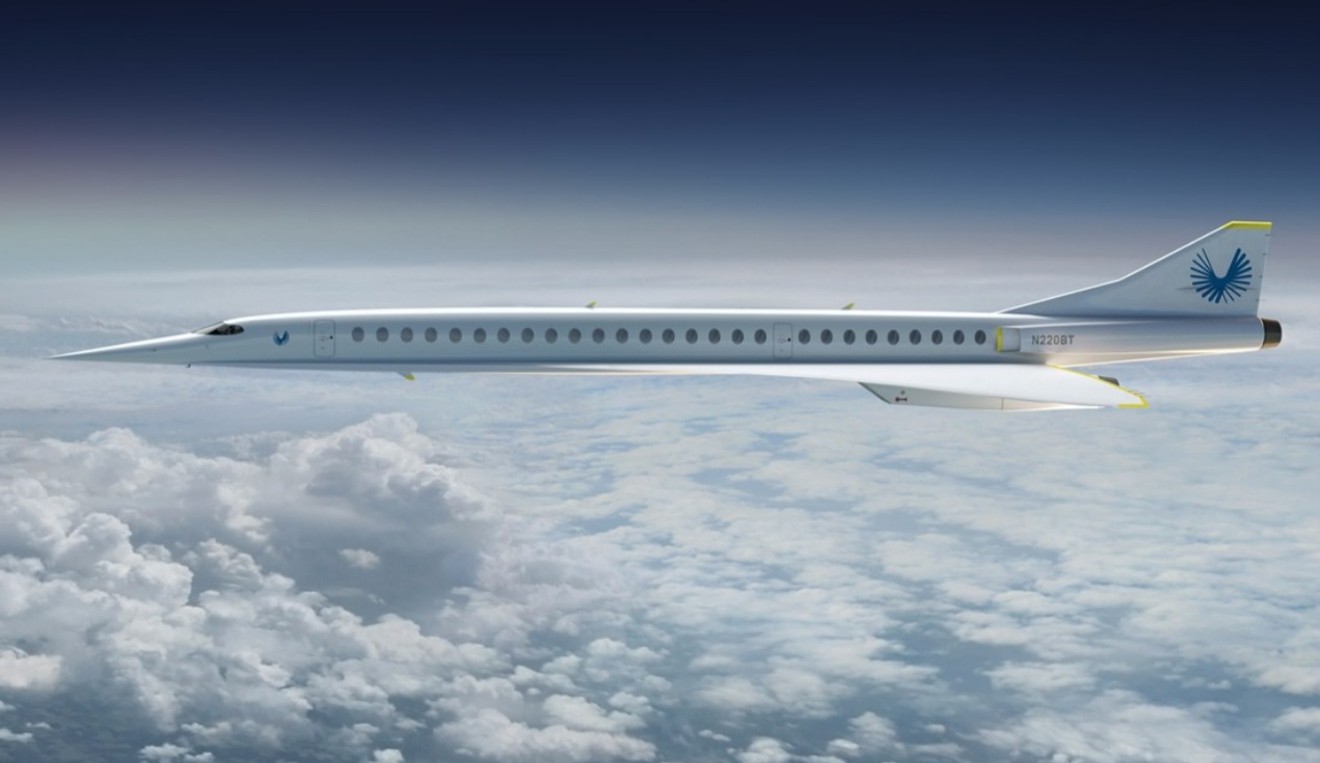The future is now at the International Aviation Forecast Summit, where approximately 400 heavyweights in the airline industry have gathered at Denver's downtown Hyatt Regency to discuss the trends travelers will be experiencing a few years from now. The event ends today, August 21, but Boyd International Group namesake Mike Boyd, the man behind the 23rd annual assemblage, offers insights about some of the changes headed our way, including the rise of supersonic aircraft from a company based in the Mile High City.
The firm behind the latter is Centennial-based Boom Supersonic, whose signature craft "will be coming on in five years," Boyd says, "and it's going to be built here. It's going to have 55 seats and fly faster than the Concorde did — and none of it is really new technology."
About three years ago, he recalls, "these guys came up with what seemed like a crackpot idea of building a supersonic aircraft. But they had answers to all the questions I asked, and when they were done, I thought, 'We've got something serious here.' Richard Branson has put money into the operation. Japan Airlines has ordered aircraft. Virgin Atlantic has ordered airlines. Ctrip out of China [now known as Trip.com] has invested in it. To me, everything looks like we're going to have a supersonic airline."
Doubters persist, Boyd admits. "You'll have naysayers tell you, 'The Concorde didn't work.' But when the Concorde first came out, your grandparents were trying to figure out whether to buy a color TV from Admiral or Zenith. That was more than fifty years ago, and the world has changed."
As an example of these shifts, Boyd points to international air transportation. "Five years ago at our conference, we predicted that places like Indianapolis and Columbus would have international travel — and it's happened. But because the cost of fuel has been going up so much, that's going to change some international travel — particularly super-long-haul flights like Singapore to New York. That's tough to do, because you have to put so much fuel on an airline, and it costs a lot to carry that. We're going to see the effect of that, as well."
An exception may be flights from China, Boyd believes.
"You have people saying there's going to be a trade war" because of tariffs put in place by the Trump administration, Boyd says. "But we're not seeing any diminution in tourist traffic. You can rattle all the sabers you want, but there are a lot of Chinese who want to see New York."
However, he continues, such folks "are going on Chinese airlines, not U.S. airlines. They don't want to get on United or American. They want to get on their own airlines. So there'll be a windfall, but not for U.S. carriers. Right now, 60 percent of the traffic is being carried by Chinese airlines, and that's only going to grow. But at some point in time, we're going to see Air China fly into Denver. They partner with United Airlines, so they'll connect people from Beijing throughout the U.S., including here."
Even as large airports offering international flights have proliferated, U.S. flights from certain ancillary locations, as well as shorter hops, have become much less popular — and that makes perfect sense to Boyd given current economic realities.
"Every form of communication in the last twenty years has changed," he notes. "When you think about it, air travel is a channel of communication, too — and increasingly, costs and consumer demands have ruled out a lot of interregional air service. Thirty years ago, there were maybe 40,000 people who flew between Albany and Boston. Today there are 4,000. And from the year 2000 to now, the traffic between Dallas, San Antonio, Houston and Austin has dropped in half, because it doesn't work for airlines anymore."
This scenario is especially problematic for folks in less populous parts of the West, Boyd acknowledges. "It's one thing if you're in Pueblo. Who cares if you've got to drive to Colorado Springs, where they've got a great airport just forty miles away? But what if you're in Cortez or Great Bend, Kansas? You have to find other ways to connect people there with the global economy, and air traffic doesn't do it. Look at Cheyenne. The airport there is throwing money around, trying to get more airlines. But you've already got a great airport: DIA. Yes, it's a drive, but it's a drive to an airport that has over 400 flights a day — which is why so many people from Wyoming are going to DIA. It's far more convenient, and it's faster."
Well, maybe not as fast as those Boom Supersonic planes on the drawing board. But there's no telling what will happen by the time next year's International Aviation Forecast Summit rolls around.
For more information, click to read the Boyd Group report "Emerging U.S. Airport Traffic Trends."
[
{
"name": "Air - MediumRectangle - Inline Content - Mobile Display Size",
"component": "12017618",
"insertPoint": "2",
"requiredCountToDisplay": "2"
},{
"name": "Editor Picks",
"component": "17242653",
"insertPoint": "4",
"requiredCountToDisplay": "1"
},{
"name": "Inline Links",
"component": "18838239",
"insertPoint": "8th",
"startingPoint": 8,
"requiredCountToDisplay": "7",
"maxInsertions": 25
},{
"name": "Air - MediumRectangle - Combo - Inline Content",
"component": "17261320",
"insertPoint": "8th",
"startingPoint": 8,
"requiredCountToDisplay": "7",
"maxInsertions": 25
},{
"name": "Inline Links",
"component": "18838239",
"insertPoint": "8th",
"startingPoint": 12,
"requiredCountToDisplay": "11",
"maxInsertions": 25
},{
"name": "Air - Leaderboard Tower - Combo - Inline Content",
"component": "17261321",
"insertPoint": "8th",
"startingPoint": 12,
"requiredCountToDisplay": "11",
"maxInsertions": 25
}
]














